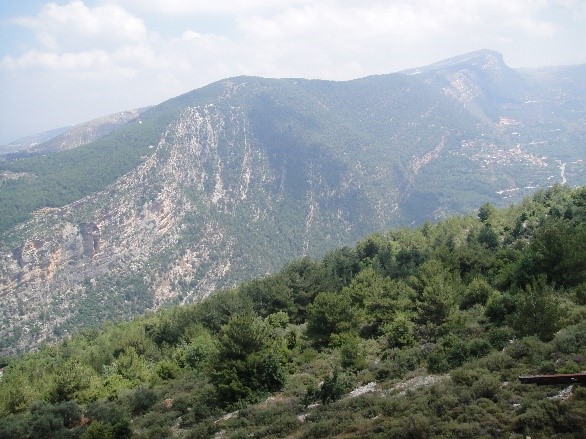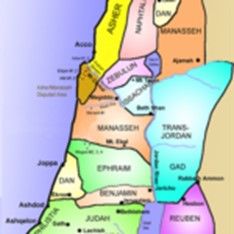Mount Lebanon

Mount Lebanon is called the “white mountain” because of its snow. It is famous for the groves of cedar trees (Cedars of Lebanon) that grow upon it. Mount Lebanon is the wooded mountain range in the Middle East that extends across the whole land of Lebanon from the coast of the Mediterranean coast.
The five nations, (five lords of the Philistines, Canaanites, Sidonians, and Hivites), that dwelt in Mount Lebanon to prove the Israelites. (Judges 3:3).
“Now these [are] the nations which the LORD left, to prove Israel by them, [even] as many [of Israel] as had not known all the wars of Canaan; Only that the generations of the children of Israel might know, to teach them war, at the least such as before knew nothing thereof; [Namely], five lords of the Philistines, and all the Canaanites, and the Sidonians, and the Hivites that dwelt in mount Lebanon, from mount Baalhermon unto the entering in of Hamath. And they were to prove Israel by them, to know whether they would hearken unto the commandments of the LORD, which he commanded their fathers by the hand of Moses. And the children of Israel dwelt among the Canaanites, Hittites, and Amorites, and Perizzites, and Hivites, and Jebusites: And they took their daughters to be their wives, and gave their daughters to their sons, and served their gods. And the children of Israel did evil in the sight of the LORD, and forgat the LORD their God, and served Baalim and the groves.” (Judges 3:1-7).
A depression called the “Homs-Tadmor Corridor” gave access to the Mediterranean Sea near Arvad. Damascus, also a great caravan city, was located east of the Anti-Lebanon Mountains (up to 10,000 feet) in an oasis formed by the Barada River (the Abana River of 2 Kings 5:12) as it flowed eastward from the slopes of the Anti-Lebanon into a semi-arid plain. Naaman, a leprous officer in the army of the Damascus kings, referred to the fresh water of the Abana and Pharpar Rivers that sustained Damascus (2 Kings 5:1–14).
Lebanon was a mountainous region tucked between the sea and the desert. Two high chains of mountains—the Lebanon Mountains (highest peak 10,115 feet) and the Anti-Lebanon Mountains (up to 10,000 feet) bisect the region north to south. Mount Hermon (9,263 feet) lies at the southern end of the Anti-Lebanon which refers to a chain. The name “Lebanon” comes from a Hebrew root meaning “white,” to the snow-capped peaks of the region. The mountains refers to famous “cedars of Lebanon.” Their great size made the cedars desirable for construction of ships and large public buildings such as temples and palaces. Solomon used cedars from Lebanon in his temple and palace (1 Kings 5:6; 7:11). The Egyptians coveted the cedars, using them for sacred boats used in transporting the image of a god. (Brisco. 1998).
The day of the LORD shall be upon every one that is proud and lofty and upon every one that is lifted up shall be brought low even all the cedars of Lebanon that are high and lifted up, when in the last days, [that] the mountain of the LORD’S house shall be established in the top of the mountains, and shall be exalted above the hills; and all nations shall flow unto it. (Isaiah 2:1-2).
“Therefore thou hast forsaken thy people the house of Jacob, because they be replenished from the east, and [are] soothsayers like the Philistines, and they please themselves in the children of strangers. Their land also is full of silver and gold, neither [is there any] end of their treasures; their land is also full of horses, neither [is there any] end of their chariots: Their land also is full of idols; they worship the work of their own hands, that which their own fingers have made: And the mean man boweth down, and the great man humbleth himself: therefore forgive them not.” “Enter into the rock, and hide thee in the dust, for fear of the LORD, and for the glory of his majesty. The lofty looks of man shall be humbled, and the haughtiness of men shall be bowed down, and the LORD alone shall be exalted in that day. For the day of the LORD of hosts [shall be] upon every [one that is] proud and lofty, and upon every [one that is] lifted up; and he shall be brought low: And upon all the cedars of Lebanon, [that are] high and lifted up, and upon all the oaks of Bashan, And upon all the high mountains, and upon all the hills [that are] lifted up, And upon every high tower, and upon every fenced wall, And upon all the ships of Tarshish, and upon all pleasant pictures. And the loftiness of man shall be bowed down, and the haughtiness of men shall be made low: and the LORD alone shall be exalted in that day. And the idols he shall utterly abolish. And they shall go into the holes of the rocks, and into the caves of the earth, for fear of the LORD, and for the glory of his majesty, when he ariseth to shake terribly the earth. In that day a man shall cast his idols of silver, and his idols of gold, which they made [each one] for himself to worship, to the moles and to the bats; To go into the clefts of the rocks, and into the tops of the ragged rocks, for fear of the LORD, and for the glory of his majesty, when he ariseth to shake terribly the earth. Cease ye from man, whose breath [is] in his nostrils: for wherein is he to be accounted of?” (Isaiah 2:6-22).
Reference:
Brisco, Thomas V. (1998). Holman Bible Atlas, Holman Reference. Nashville, TN: Broadman & Holman Publishers.
Cite Article Source
MLA Style Citation:
Holstein, Joanne “Mount Lebanon:.” Becker Bible Studies Library May 2015.<https://guidedbiblestudies.com/?p=2832,>.
APA Style Citation:
Holstein, Joanne (2015, May) “Mount Lebanon:.” Becker Bible Studies Library. Retrieved from https://guidedbiblestudies.com/?p=2832,.
Chicago Style Citation:
Holstein, Joanne (2015) “Mount Lebanon:.” Becker Bible Studies Library (May), https://guidedbiblestudies.com/?p=2832, (accessed).

